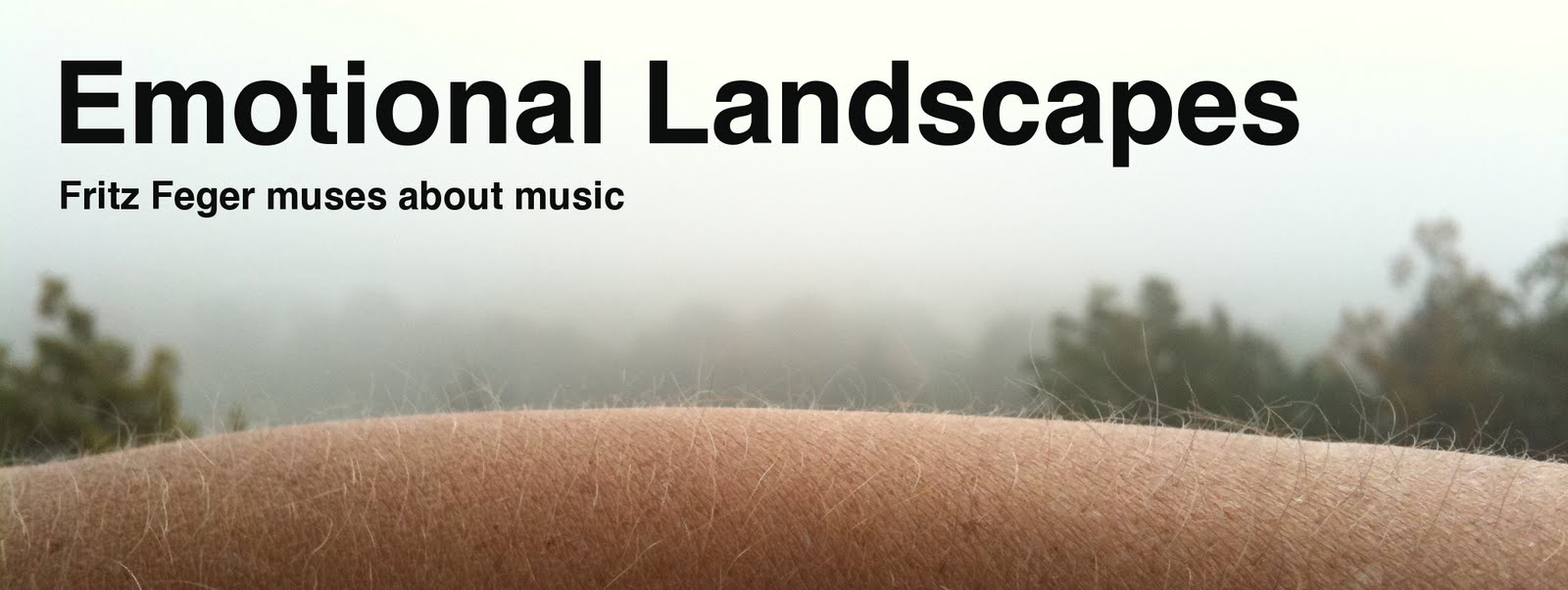For the music for NOWHERENOW (a film by Volker Schmitt, cf. also my previous posting) I would like to have a go at the construction principle 'leitmotif'. After Carl Maria von Weber, Beethoven, Berlioz and others, Richard Wagner and Richard Strauss, in particular, have gained complete mastery in the use of leitmotifs or 'musical refeferents'. An exceptionally enlightening example is Sergei Prokofiev's splendid Peter and the Wolve. Leitmotifs are also quite common in movie scores; among the most quoted examples is John William's Imperial March from Star Wars which is associated with Darth Vader. But even in a genre as much committed to the song form as pop music, leitmotifs can be heard, e. g. on concept albums like Genesis' double LP The Lamb Lies Down on Broadway.
Leitmotifs are an attractive option for NOWHERENOW as the music will presumably play during the whole film (almost a quarter of an hour) without interruption. Fitting a song to each scene is thus not available. Lukas, the cynical, hip journalist gets a beatbox rhythm as leitmotif which recalls the Ibiza compatible lounge music he is likely to prefer. The manic professor is supplied with a complex network of strings reminiscent of Hindemith's, Bartók's, and other 20th century composer's string quartets. It will mirror his complicated calculations and his vintage metering devices.
Departing from Peter and the Wolve and most other musical instances, the NOWHERENOW music will not only provide figures with leitmotifs (especially as there are only two of them...), but also certain aspects of their personalities or certain emotions. For instance I am considering to coin a motive for the enthusiastic belief in the impossible (i. e. that in a moment a spaceship with a water drive will take off). It will be heard every time when the professor gets into his vision - and, at the end of the film, it will also touch Lukas when he is sitting in the sand and listens to the professor cheering the successful start at the can phone.
Leitmotifs cannot only help elaborating the 'psychograms' of the protagonists - Igor Stravinsky, following Wagner critic Eduard Hanslick, ridiculed leitmotifs as 'cloakroom numbers' of the figures, identifying them all too rigidly. They can also be used to retrace the evolution of the characters. This is the more manifoldly so with leitmotifs which are not attached to figures. Yet the do secude one to write a film music closely along the scene, an illustrative music without a message of its own by construction, contrasting what is seen. But this dose of Hollywood is allowed this time...



